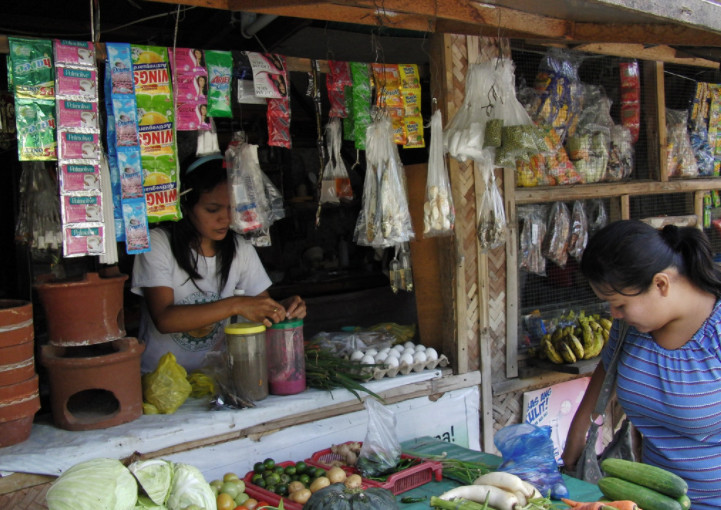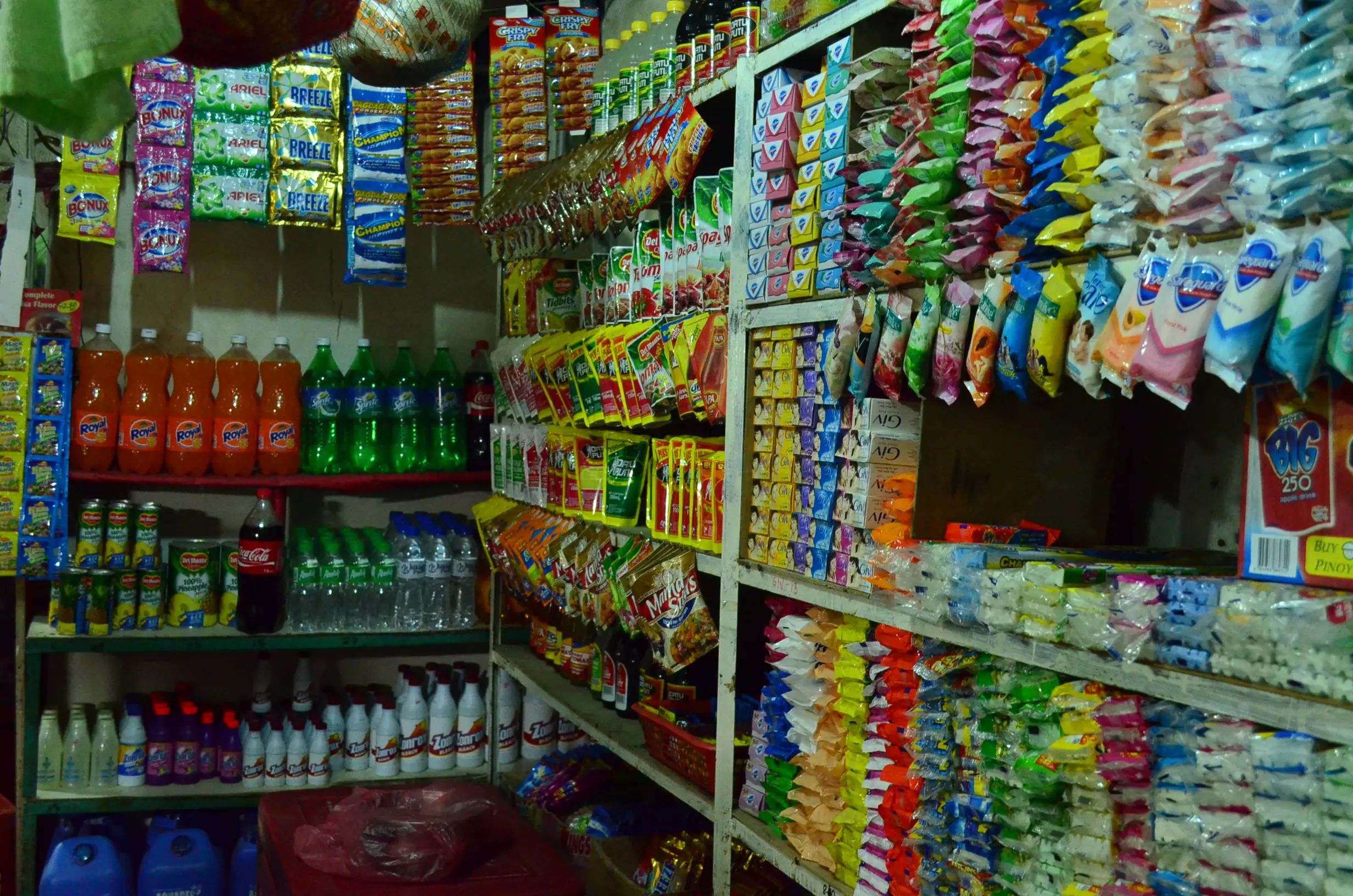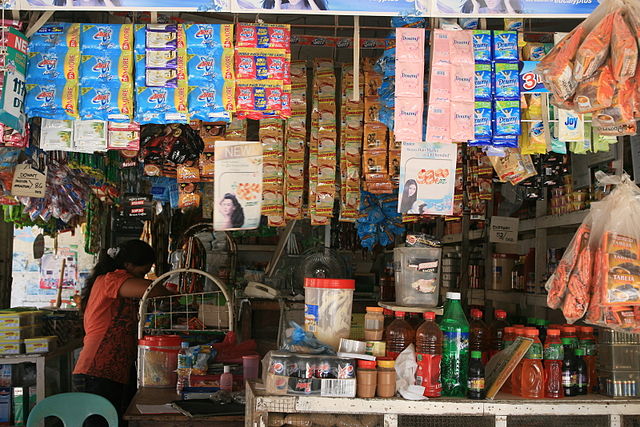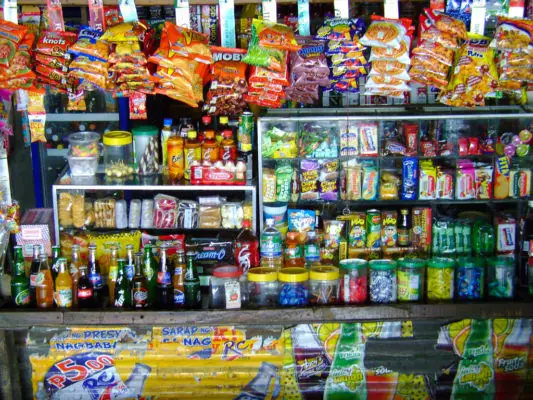Many smaller sari-sari store vendors establish their business with the primary purpose of augmenting their family income and providing direct supply of household necessities as among the benefits of setting up shop.
No wonder after even less than one year, many of such shops have dwindling supplies, empty shelves and discontinued the business. Unpaid debts by customers or supplies consumed by the family have been the usual culprits.
If your plan is to stock food supplies bought in bulk on discount for family use, you might as well stock it at storeroom and don’t bother setting up the sari-sari store because starting a business with such mentality is doomed to fail. If you have similar mindset, perhaps you need more discipline in running the business so cash capital to replenish supplies will be available and for the store to sustain its operations.

Table of Contents
Treat the store as if it’s not yours
As though you work for the shop owner, you will be careful with the inventory, cash flow and earnings of the day. You’ll have to do accounting and ensure that cash on hand matches the value of items sold. If you treat it as your own store, you or other members of the family can easily take any item to consume and use without being liable (not paying) for it.
It may be a good convenience for the family’s needs, but as a business, it’s a terrible model to adopt. As a result, your shop supplies will eventually dwindle and unable to get replenished because your cashflow is missing its revenue for the unpaid items you or other family members took.
Therefore, always think as if you’re working for an employer and you’re accountable of the sales revenue. That way, you’ll be motivated to get things right day after day, without fail.
Start selling with basic needs of neighborhood
Starting your neighborhood sari-sari store, if you have small capital money, say less than P10,000, your aim is not only to sell your goods, but to sell them fast. One reason behind this is, unless you did market research, you don’t know exactly what people nearby actually buy frequently. For example if store is located near the church, perhaps you can include candles and matches, and if in the middle of a subdivision, cellphone loading, canned milk and laundry powder.
This approach also helps to roll your capital faster and opportunity to grow your business and quickly establish relationship with customers.
A quick list of these items may include the following:
| Food | Snacks/Drinks | Kitchen/Cooking | Toiletries/Laundry |
|---|---|---|---|
| Canned goods (sardines, meat loaf, etc) | Instant coffee, milk, sugar | Salt, pepper, cooking oil, vinegar, soy sauce | Shampoo, bath soap, conditioner |
| Frozen meat, eggs | Powdered drinks, juice | Marinade mix, fish sauce, tomato sauce, ketchup | Detergent bar/powder, bleach, fabric softener |
| Instant noodles, bihon, sotanghon | Bread, pastry | All-purpose flour, baking powder | Toothpaste, toothbrush |
| Rice, fruits, vegetables | Butter, margarine | Garlic, onion, ginger | Diapers, sanitary napkin, toilet paper |
You can then expand your product range once you have established a trend of popular products and often asked ones that are not yet on display. You may also list down items that you don’t currently sell (see #4 on how to deal with customers on this matter) and consider them for your next round of replenishing supplies.
Take only profits of the day
With plan to grow the business and roll part of your earnings for capital expenditure, it’s prudent to be disciplined on how you account your day’s revenues. If, on average, your markup price is 10% of goods you sell minus expenses — transportation and labor costs over a certain period — it’s not too difficult to calculate how much is your profit on a given business day.
So if you earn P1,500 in a day, you can only take 10% of P1,500 (P150) as profit and reserve P1,350 to replenish your store inventory.
Taking only profits not only preserves the rest of your money to restock your inventory, you also realize how big, or small, your profit is, and be more motivated to improve your earnings.
It’s “Out of stock”, not “We don’t sell them”
You may be managing a “sari-sari” store but it’s understandable that it’s not that literally “sari-sari”; it cannot sell everything, from certain shampoo brands to milk varieties. But instead of saying “we don’t sell them” or any phrase implying that your store is far from a complete one-stop shop which creates an impression other items this customer might look for later are not available, tell customers you simply ran out of stock.
Of course if this item is simply not expected to be sold from your sari sari store known for snacks, condiments or toiletries, such as spark plug or USB charger, you can tell customer you don’t sell them so they won’t expect they’ll be available on a future store visit. Otherwise, make a note if such missing item should be part of your next products to replenish your shelves.
Pack certain products in smaller quantities/portions
Some customers are used to buying in smaller pieces (tingi-tingi in local lingo) instead of standard sizes — she wants P5 cooking oil instead of the P60 1-liter pack. No wonder shampoo, powdered detergent and powdered milk packaged in sachets and tipid packs are often found in neighborhood sari-sari stores.
Some of these items can be repacked into smaller pieces so they can be sold cheaply. This includes P5 packs of soy sauce, garlic or cooking oil. While pepper, garlic and similar items are also sold prepacked in smaller pieces at supermarket dealers, your profit margins may become very small. A better option might buying in bulk from your wholesaler instead of the supermarket to get better deals.
Some of the items you can pack in smaller quantities.
- Garlic
- Onion
- Cooking Oil
- Sugar
- Bleach
- Salt
However, it also takes time and additional equipment (plastic containers, weighing scale, etc) to prepare them so just ensure you have enough resource to do the job while manning the store.
Ensure sari sari store product quality
As many of the items are fast moving consumer goods, shelf life may also be limited. So make it a point to review the expiry date of the products you sell. Make sure that the first to arrive in your shop are also the first to be disposed.
To increase shelf life, store certain items at desired environment.
- Frozen meat has to be stored at freezer temperatures around -18C.
- Do not expose goods at direct sunlight — chips, biscuits,
- Prevent infestation of ants on sugar and sweet snacks by using repellant chalk.
- Avoid accidentally puncturing the seal of powdered goods should you use push pins or thumb tacks to display items like powdered milk, 3-in-one coffee or instant noodles. If you can, don’t use push pins, staplers or thumb tacks.
- Immediately discard chips that lose crispness, rotten tomatoes from the fresh ones or any other items that are unpleasant to the eyes (and taste) of a customer.
Take note of seasonal items and upsell
There are products that are sold more quickly during certain periods of the year. During rainy season, you may stock up more on instant noodles, champorado mix or a wider variety of choco and coffee products. Also note that people tend to be lazy and decide skip a visit to the market for their usual grocery shopping so anticipating weather patterns can yield even more profits.
During fiestas, you can stock extra cases of beer, softdrinks, packs of spaghetti sauce, cheese or any other items that might run out in a household as visitor number swell. Remember to charge deposits for bottles to ensure they are properly compensated once they are not returned.
For hot summers, expand your cold drinks on offer. Besides your steady supply of softdrinks, add energy drinks, ice candy, lemonade and other cold refreshments your target customers look for.
If customers aren’t used to seeing these products on your shelf, you can promote them even when customers come to buy another item; if they buy the usual daily two-kilo rice supply, upsell them with new varieties that are highly relevant and may even bring them more value.
No credits. Period.
Without even you mentioning it, the store’s premises should shout the slogan to discourage customers from taking goods without paying up front. In such low-margin shop, every earned peso counts on your daily profits.
Such habit of allowing customers to take your product on credit will drive you out of your sari-sari store business.
You might hear unpleasant comments from some people who are used to this habit, but for the sake of the survival of your sari-sari store business, it makes a lot of sense to discourage credit. Without capital money to buy fresh inventory, you are unable to fill the empty shelves, depriving others from buying from your store and instead switch to a competitor.
Be friendly to your customers.
It’s not purely a business relationship between sari-sari store owner and his or her customers. There should also be a personal touch. After all, they are mostly your neighbors who patronize your business so a small talk should be fine.
Put a genuine smile on your face to express appreciation of their business, no matter it’s just a piece of candy bought by the naughtiest boy around. Having a friendly attitude pays off big especially when customers cannot distinguish price difference between you and your competitors.
Always be ready to serve them. Customers are typically put off if the storekeeper is away from the store and need to shout to get her or his attention.
Being friendly does not mean you’ll fall for their whims: Pwede pautang? Walang tawad, kumare?
Say thank you and make sure they get the right product quantity/volume, correct spare change, if any, and served promptly even with a crowd of customers around.
Conclusion
No matter the size of your sari-sari store business, there are always challenges — competing shops nearby, lack of inventory skills, neighbors who want credits, and of course, inflation. But the above tips should help to guide you to grow your business, despite these challenges.









